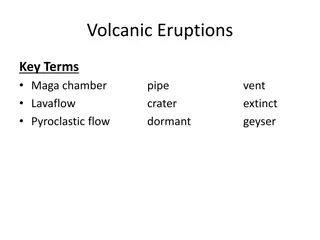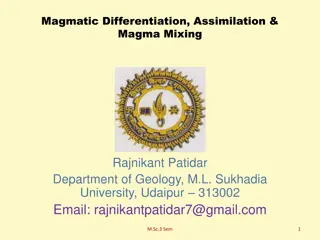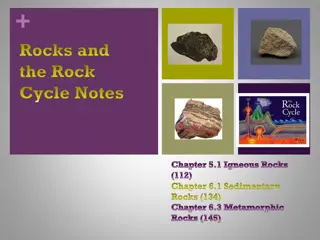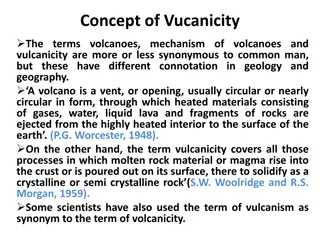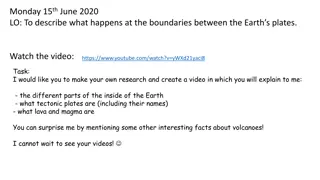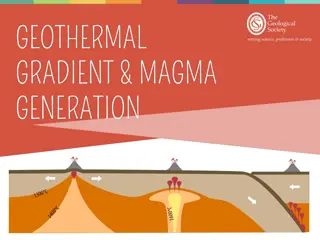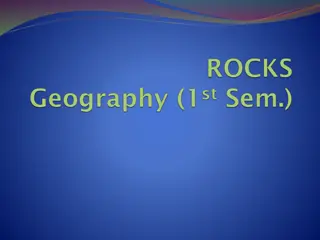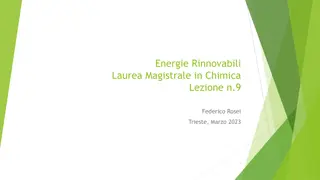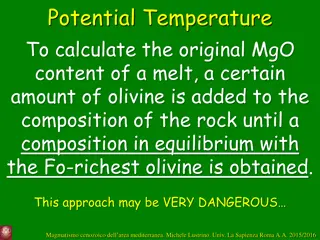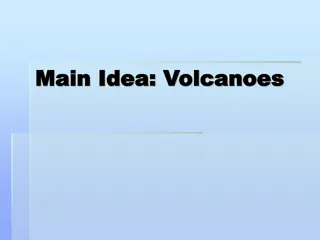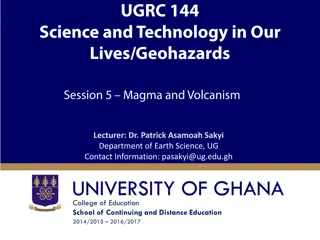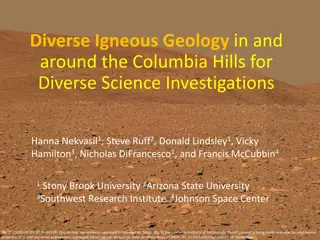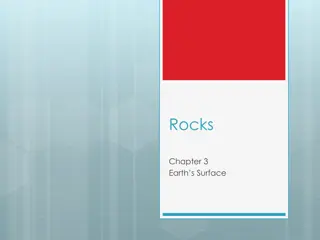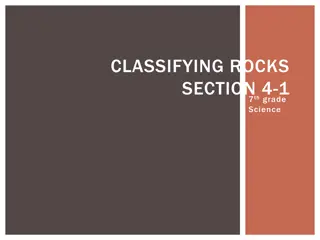Understanding Volcanic Eruptions: Key Terminology and Processes
Volcanic eruptions are caused by the release of pressure inside the Earth, leading to the expulsion of magma through volcanic vents. This process results in the formation of cone-shaped mountains or hills known as volcanoes. The magma, which originates from the asthenosphere, rises through cracks in
1 views • 24 slides
Understanding Magmatic Differentiation and Magma Mixing
Magmatic differentiation is the process through which a single homogeneous magma can produce diverse rock types by generating fractions of different compositions. This variation in igneous rocks results from mechanisms like fractional crystallization, liquid immiscibility, vapor transport, and diffu
1 views • 29 slides
Understanding the Rock Cycle: Igneous, Sedimentary, and Metamorphic Rocks
This educational material covers the formation and characteristics of Igneous, Sedimentary, and Metamorphic rocks. It includes details on the processes involved, such as heat melting rocks into magma, sediment formation through erosion and deposition, and the differentiation between intrusive and ex
1 views • 16 slides
Understanding Volcanoes: Mechanisms and Vulcanicity
Volcanoes, mechanisms of eruption, and vulcanicity are explored in geology and geography. Learn about volcanic vent characteristics, types of volcanoes, and classifications based on eruption modes. Vulcanicity encompasses processes involving magma ascent and surface appearance.
0 views • 16 slides
Crystallization Principles in Chemical Engineering: Understanding Crystal Formation and Purification Methods
Crystallization is a key process in chemical engineering, involving the formation of solid particles within a homogeneous phase to obtain pure chemical substances. This article discusses the principles of crystallization, the importance of crystal size control, equilibria in the process, and the con
1 views • 40 slides
Exploring the Forces of Nature: Volcanoes and Tectonic Plates
Embark on a journey to uncover the mysteries of the Earth's inner workings by delving into the dynamics of tectonic plates, magma, and lava. Discover the marvels of volcanoes, from their key features to the impact of volcanic eruptions on both the environment and people. Engage in creative tasks lik
0 views • 10 slides
Understanding Earth's Processes: Chapter 6 Clicker Questions
In Chapter 6, the focus is on the melting associated with the addition of carbon dioxide or water to rocks, magma composition, viscosity of hot mafic magma, and identification of pyroclastic flows. Explore these concepts through interactive clicker questions featuring informative images.
0 views • 11 slides
Understanding Earth's Interior Composition and Magma Generation
The Earth's interior comprises the lithosphere, asthenosphere, outer core, and inner core, heated by radioactive decay and residual heat. The lithosphere is rigid, while the asthenosphere beneath can flow plastically. Magma is generated at mid-ocean ridges, hotspots, and subduction zones, where plat
0 views • 8 slides
Understanding Earth's Geology: Chapter 6 Clicker Questions
Chapter 6 of the Earth's geology covers various topics including the melting associated with the addition of carbon dioxide or water to rocks, types of magma based on silica content, descriptions of hot mafic magma, and characteristics of pyroclastic flows in volcanoes. Test your knowledge with thes
0 views • 11 slides
Understanding Rocks and Minerals: Types and Formation
Rocks and minerals are natural substances with distinct characteristics. Rocks are solid aggregates of minerals or mineraloids, while minerals are naturally occurring chemical compounds. There are three main types of rocks: igneous, sedimentary, and metamorphic, each formed through different process
0 views • 16 slides
Unveiling the Power of Geothermal Energy: A Deep Dive into Earth's Renewable Heat Source
Geothermal energy, originating from the Earth's core, offers a sustainable and accessible energy solution. This renewable resource, driven by high temperatures and pressures beneath the Earth's surface, can be harnessed through innovative technologies. Discover how geothermal energy - whether in the
7 views • 15 slides
Understanding Olivine Equilibrium in Calculating Original Magma Composition
The process involves analyzing olivine in basaltic rocks, selecting olivine with the highest Fo content, calculating the melt composition in equilibrium with this olivine using the distribution coefficient (KD), and determining the potential temperature (Tp) based on the MgO content. The distributio
0 views • 30 slides
Understanding Volcanoes: Structure, Caldera Formation, and Characteristics
Volcanoes are geological formations with vents, craters, and slopes. The structure of a volcano includes a vent for lava emission and a crater connected to a magma chamber. Understanding the difference between a caldera and a crater is crucial - calderas are much larger, around 50 km in diameter, fo
0 views • 5 slides
Understanding Volcanic Processes and Magma Formation with Dr. Patrick Asamoah Sakyi
Explore the dynamics of volcanic eruptions, magma formation, and volcanic materials in this session led by Dr. Patrick Asamoah Sakyi from the Department of Earth Science at UG. Delve into topics such as magma origins, lava composition, factors influencing volcanic eruptions, volcano classification,
0 views • 41 slides
Exploring Diverse Igneous Geology in and around the Columbia Hills
Studying the diverse igneous geology in and around the Columbia Hills provides insights into Martian atmosphere, volatile budget, age, source characteristics, cooling history, and more. Researchers have uncovered valuable information by coupling unaltered igneous rocks with meteorites and surface sp
0 views • 19 slides
The Complicated Formation of Earth's Water: A Detailed Overview
Jun Wu and colleagues at Arizona State University have developed a comprehensive model to explain the origin of Earth's water through stages such as planetary accretion, core formation, and interactions with the solar nebula. By tracing the isotopic composition of hydrogen, they explore how water so
0 views • 7 slides
Understanding Rocks and the Rock Cycle
Explore the world of rocks through this educational content on Earth's surface, rock cycle, rock types (igneous, sedimentary, metamorphic), and the formation of igneous rocks from magma and lava. Learn how rocks are made of minerals, the continuous process of the rock cycle, and the classification o
0 views • 29 slides
Understanding Rock Classification in 7th Grade Science
When studying rocks, scientists analyze their mineral composition, color, and texture. Rock-forming minerals play a significant role in Earth's geology, with granite and basalt being prime examples. The texture of rocks is determined by the size, shape, and pattern of grains present. Rocks form thro
0 views • 9 slides
